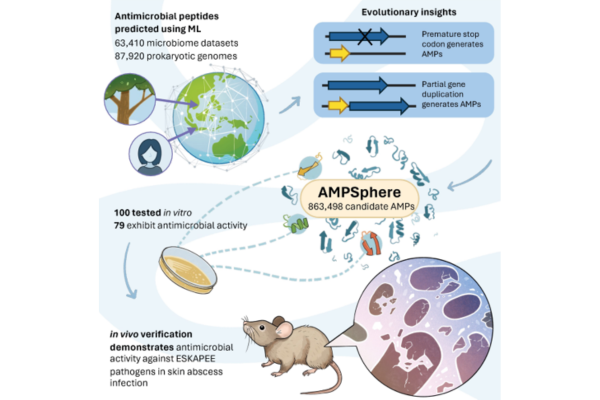
Almost a century ago, the discovery of antibiotics like penicillin revolutionized medicine by harnessing the natural bacteria-killing abilities of microbes. Today, a new study co-led by researchers at the Perelman School of Medicine at the University of Pennsylvania suggests that natural-product antibiotic discovery is about to accelerate into a new era, powered by artificial intelligence (AI).
The study, published in Cell, the researchers used a form of AI called machine learning to search for antibiotics in a vast dataset containing the recorded genomes of tens of thousands of bacteria and other primitive organisms. This unprecedented effort yielded nearly one million potential antibiotic compounds, with dozens showing promising activity in initial tests against disease-causing bacteria.
“AI in antibiotic discovery is now a reality and has significantly accelerated our ability to discover new candidate drugs. What once took years can now be achieved in hours using computers” said study co-senior author César de la Fuente, PhD, a Presidential Assistant Professor in Psychiatry, Microbiology, Chemistry, Chemical and Biomolecular Engineering, and Bioengineering.
Nature has always been a good place to look for new medicines, especially antibiotics. Bacteria, ubiquitous on our planet, have evolved numerous antibacterial defenses, often in the form of short proteins (“peptides”) that can disrupt bacterial cell membranes and other critical structures. While the discovery of penicillin and other natural-product-derived antibiotics revolutionized medicine, the growing threat of antibiotic resistance has underscored the urgent need for new antimicrobial compounds.
In recent years, de la Fuente and colleagues have pioneered AI-powered searches for antimicrobials. They have identified preclinical candidates in the genomes of contemporary humans, extinct Neanderthals and Denisovans, woolly mammoths, and hundreds of other organisms. One of the lab’s primary goals is to mine the world’s biological information for useful molecules, including antibiotics.
This story was written by Eric Horvath. To read the full article, please visit Penn Medicine.
